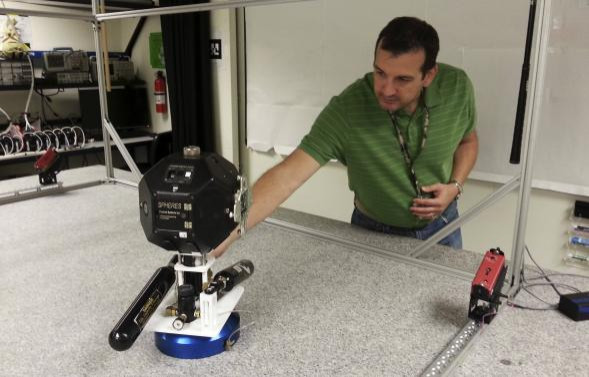Google Project Tango Smartphones to Serve as Eyes and Hands for Nasa Robots in Space

In what could be termed as a major sci-tech innovation, robots onboard Nasa's International Space Station (ISS) are set to be equipped with next-gen Google 3D sensing smartphones. These devices are part of a larger Google initiative called Project Tango.
Google's Project Tango is aimed at developing an Android smartphone prototype equipped with 3D sensors which track the surrounding environment and create a 3D model of the atmosphere that surrounds the phone.
Nasa will be using the Project Tango smartphones on a satellite project that the US space research agency developed and launched in 2006, called Synchronized Position Hold, Engage, Reorient, Experimental Satellites (Spheres).
The satellite project has created a set of bowling-ball sized robot-like spherical satellites that are used inside Nasa's ISS to test programming instructions on various satellite/spacecraft related operations such as satellite servicing, vehicle assembly, and formation flying spacecraft configurations.
Spheres satellites are designed to fly around inside the ISS in multiple formations, enabling astronauts to test spacecraft configurations. These robots can be made to move inside the space station by using small carbon-dioxide bursts that act as the propeller.
Project Tango smartphones will be used as "eyes" and "hands" by Spheres robots, to perform high-risk tasks and aid astronauts in various assignments outside of the space station.
These Kinect-like 3D sensing smartphones will be launched by Nasa in a cargo spaceship on 11 July.
"We wanted to add communication, a camera, increase the processing capability, accelerometers and other sensors. As we were scratching our heads thinking about what to do, we realized the answer was in our hands," stated Chris Provencher, project manager for Spheres, to Reuters.
Chris Provencher's latest statement comes in the aftermath of Nasa finding out that Spheres robots needed to become smarter, given that they were apparently only capable of mere 'precise movements.'
Sensing that the robots made very little impact, Nasa sent various Google devices such as Nexus One and Nexus S into the ISS which offered comparatively better visual and sensing capabilities. But effective mobility could not be achieved even with the combination of Google smartphones.
With this in mind, Nasa has currently chosen the internet search engine giant's Project Tango that promises advanced 3D imaging capabilities along with making Spheres robots more mobile.
Technical-specification wise, smartphones developed under Google's Project Tango come with a motion tracking camera and an infrared sensor that is said to be similar to Microsoft Kinect. These infrared sensors should help Spheres navigate effectively between multiple modules by detecting sharp angles inside the ISS.
"This type of capability is exactly what we need for a robot that's going to do tasks anywhere inside the space station, it has to have a very robust navigation system," added Chris Provencher.
© Copyright IBTimes 2025. All rights reserved.





















